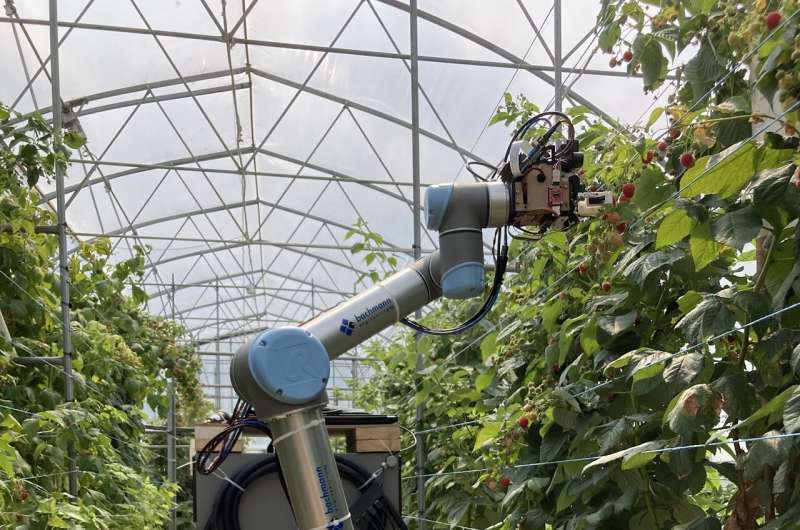A trio of roboticists at CREATE Lab, EPFL, in Switzerland, has designed, built and tested a robot that can pick raspberries. In their project, reported in the journal Communications Engineering, Kai Junge, Catarina Pires and Josie Hughes designed and tested their robot based on a new idea to reduce the cost of designing fruit-picking robots.
Over the past several years, the demand for food has grown with rising population. In response, scientists are looking for ways to produce more food at a reasonable coast. One approach involves using robots instead of humans to perform manual labor, such as picking fruit, TechXplore informs.
Picking almost any fruit on a large scale is, by its nature, labor intensive and fruit harvesting is considered to be a relatively expensive operation. So scientists have been working toward the use of robots to pick fruit. This has proven to be more difficult for certain crops than others. Picking raspberries, for example, is difficult for a robot as it involves multiple skills. A robot must be able to determine which fruit is ripe and it must be able to pick each one individually without causing any damage to the fragile fruit.
Picking raspberries without causing damage is more difficult than for other fruit because picking involves grasping the fruit around its center, rather than its stem. Squeezing too hard crushes the fruit. Another problem for such specific applications is the huge amount of time involved in field learning and testing. In this new effort, the researchers in Switzerland tried to solve both problems using a new approach—teaching the robots what to do by using artificial plants and fruit. Thus, the work by the team involved designing both a robot and an artificial raspberry plant.
Allowing a robot to learn to pick fruit repeatedly in a test lab, the research team found, is significantly faster and cheaper than doing it in the field. The robot they built uses graspers for picking and cameras and software to identify fruit targets. By practicing multiple times in the lab, the robot grew better at identifying and picking raspberries. The team then moved outside and tested the robots on their raspberry-harvesting skills on real fruit.

Closeup up the raspberry harvesting robot in the green house of the raspberry farm where all field experiments have been performed, about to harvest the fruit. Credit: Kai Junge.
The robots turned out to be sub-par compared to humans, picking only 60% of appropriate targets without damage. This compares to approximately 90% for human pickers. The researchers suggest their work thus far proves the process can work and that improvements could likely increase the accuracy to human levels.
The use of the site materials is free if there is a direct and open for search engines hyperlink to a specific publication of the East-Fruit.com website.




